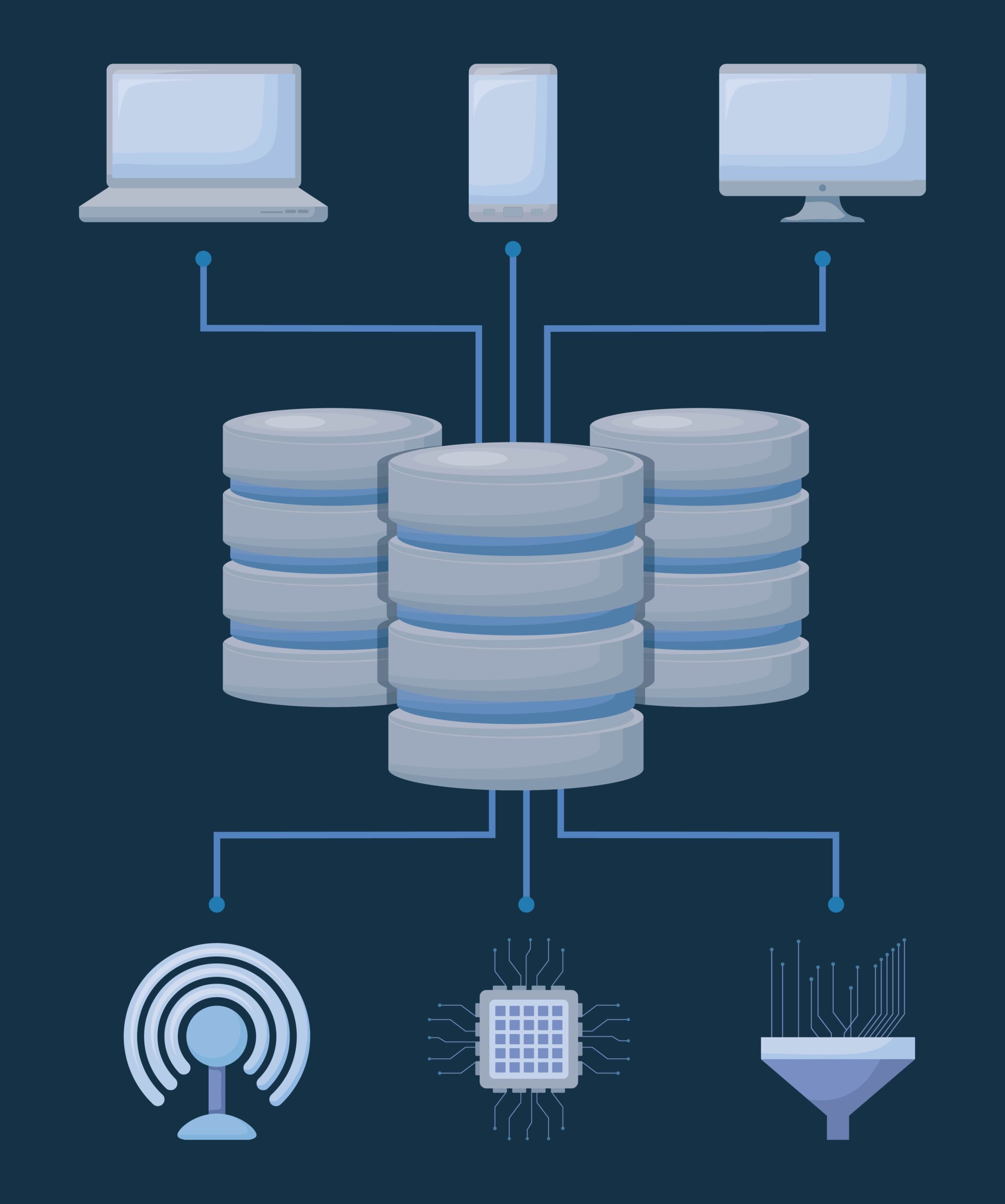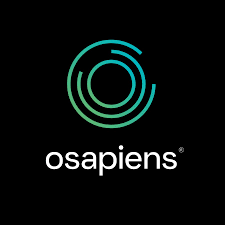When Data Stays in Silos, Risk Rises: Lessons from Real Cases

JPMorgan’s $6.2 billion London Whale loss in 2012 traced directly to a technology failure: risk systems in London and New York could not aggregate exposures across a single trading book. Four years after Lehman Brothers collapsed under the weight of fragmented data infrastructure, the industry still lacked the tools to integrate risk data enterprise-wide. Today, that technology exists. When data stays in silos, compliance teams now have RegTech platforms specifically designed to solve integration problems that defeated previous generations of software. The question is no longer whether integration is possible, but which technologies deliver results in complex legacy environments.
Data Integration Platforms: Federation Over Consolidation
The traditional approach to data integration, extract-transform-load warehousing, failed institutions repeatedly because it attempted to physically move and standardize data from dozens of incompatible systems. By the time data reached central warehouses, it was stale. Transformation logic became impossibly complex. Projects collapsed under their own weight.
Modern integration platforms use fundamentally different architectures. Collibra, Informatica, and Denodo employ data fabric and federation technologies that create unified views without moving data. These platforms use metadata management and semantic mapping to query disparate systems in real time, reconcile differences, and present consolidated results. Source systems remain unchanged, dramatically reducing implementation risk.
The technical innovation is the virtualized data layer. When a compliance officer requests aggregate credit exposure, the platform simultaneously queries the loan system, derivatives platform, and treasury system. It reconciles legal entity identifiers, converts currencies using consistent methodologies, and returns a unified view in seconds. The underlying systems never communicate directly; the integration platform orchestrates everything through APIs.
This approach solves the problem that defeated Lehman Brothers. When the bank collapsed in September 2008, it operated more than 2,600 legal entities across dozens of disconnected systems. Risk managers could not aggregate exposures because each system used incompatible data models and identifiers. Modern federation platforms establish common semantic layers that translate between these incompatibilities without requiring source system changes.
API-driven integration accelerates deployment. Contemporary core banking systems, risk platforms, and trading systems expose standardized APIs that RegTech solutions consume without custom coding. This enables implementations in months rather than years. When data stays in silos, API-based integration provides the fastest path to unified views.
Regulatory Reporting Automation: Purpose-Built for BCBS 239
The Basel Committee on Banking Supervision issued its Principles for Effective Risk Data Aggregation and Risk Reporting, known as BCBS 239, in January 2013. The framework requires systemically important banks to aggregate risk data across business lines, entities, and jurisdictions to produce accurate, complete, and timely reports. Manual compliance is effectively impossible when data remains fragmented.
Wolters Kluwer’s OneSumX, Moody’s Analytics RiskAuthority, and AxiomSL’s regulatory reporting platforms provide pre-built solutions specifically for BCBS 239 compliance. These systems include data models aligned with regulatory taxonomies, automated calculation engines, and report generation capabilities. Institutions map their data to regulatory requirements once; the platform handles calculations and formatting automatically.
The critical capability is automated data lineage. BCBS 239 requires institutions to trace reported figures back to source systems and demonstrate accuracy. These platforms maintain complete lineage automatically, documenting how each value was derived, which systems contributed data, and what transformations were applied. Manual lineage documentation that previously required armies of analysts becomes automated metadata.
Deutsche Bank’s extended struggle with BCBS 239 compliance illustrates the cost of delay. Beginning in 2015, regulators imposed restrictions on the bank’s US operations, citing inadequate data aggregation capabilities. Remediation required years and billions of euros. When data stays in silos across legal entities and jurisdictions, demonstrating consolidated risk reporting capabilities becomes extraordinarily difficult. Purpose-built regulatory reporting platforms address this by providing pre-configured entity hierarchies, consolidation logic, and jurisdictional reporting rules.
Institutions using these platforms report dramatic efficiency gains. Manual regulatory reporting processes that previously required three weeks complete overnight. More valuable is the agility: when supervisors request ad hoc stress scenarios or updated forecasts, integrated systems produce results in hours rather than weeks. This responsiveness directly affects regulatory relationships and examination outcomes.
Real-Time Risk Aggregation: Preventing the Next London Whale
JPMorgan’s Chief Investment Office in London used different value-at-risk models than corporate risk managers in New York. The Senate Permanent Subcommittee on Investigations found this fragmentation prevented accurate enterprise-wide risk measurement. By the time consolidated reports revealed the problem, losses exceeded $6 billion. When data stays in silos with incompatible methodologies, aggregate risk becomes measurable only after losses materialize.
Axioma, Murex, and Bloomberg provide platforms that ingest position data from multiple trading and treasury systems, apply consistent valuation and risk models, and generate enterprise-wide metrics continuously. Rather than end-of-day batch processes, these systems monitor aggregate exposures throughout trading sessions. Risk managers see consolidated value-at-risk, stress scenarios, and limit utilization updated every few minutes.
In-memory computing technology enables this real-time capability. Platforms process billions of transactions and recalculate risk metrics in seconds. Cloudera and Databricks provide the underlying infrastructure, using distributed computing to handle volumes that would overwhelm traditional databases. This transforms risk management from retrospective reporting to active monitoring.
Integration with limit management systems creates automated controls. When aggregate exposure approaches thresholds, platforms can block additional trades or escalate alerts automatically. This prevents situations where risk limits are breached repeatedly because disconnected systems cannot enforce enterprise-wide constraints. The London Whale accumulated positions that exceeded multiple risk limits precisely because systems could not aggregate exposures in real time.
Implementation requires standardized position data and consistent valuation methodologies. Institutions must establish golden sources for market data, agreed-upon valuation models, and common risk metrics. The technology can aggregate and calculate rapidly, but it requires clean, standardized inputs. Many implementations stumble because institutions underestimate the data governance prerequisites.
Customer Surveillance Technology: Entity Resolution and Pattern Detection
Wells Fargo employees opened approximately 2 million unauthorized accounts between 2011 and 2015, resulting in a $185 million Consumer Financial Protection Bureau settlement. The scale shocked regulators, but the compliance failure was predictable. When data stays in silos across product lines and branches, detecting patterns of misconduct becomes nearly impossible. A customer with five checking accounts opened on the same day triggers no alerts when each account exists in a separate database.
Quantexa and SAS provide customer data platforms using entity resolution technology to link identities, accounts, and transactions across fragmented systems. Entity resolution algorithms identify that “John Smith” at address A with phone number B is the same person as “J. Smith” at address A with phone number C, even when different systems use inconsistent formats and identifiers. This creates a unified customer view that enables pattern detection.
Machine learning enhances surveillance by identifying anomalous behavior. AI models trained on normal customer patterns can detect deviations suggesting unauthorized account opening, fraud, or money laundering. These models require comprehensive data spanning all customer touchpoints, which siloed architectures cannot provide. Integrated platforms deliver the data foundation that makes advanced analytics effective.
Financial institutions deploy these technologies for anti-money laundering, sanctions screening, fraud detection, and conduct surveillance. The technical approach is consistent: establish unified customer and transaction views, apply analytics to detect risk patterns, and generate alerts for investigation. Effectiveness depends on data quality and coverage. Partial integration that misses key data sources creates gaps that sophisticated misconduct can exploit.
The regulatory imperative extends beyond consumer protection. Anti-money laundering regulations require institutions to monitor customer activity holistically. Criminals structure transactions across accounts and channels specifically to avoid detection. Effective surveillance demands integrated data that reveals patterns invisible to siloed monitoring systems.
Cloud Infrastructure and Hybrid Architectures
Deutsche Bank’s BCBS 239 remediation highlighted how on-premise infrastructure constraints impede integration. The bank operated hundreds of applications across dozens of data centers, creating enormous complexity for integration projects. Cloud-based RegTech platforms offer alternative approaches that reduce this complexity.
Amazon Web Services, Microsoft Azure, and Google Cloud provide managed data integration services that eliminate much of the custom development traditional approaches required. Institutions can deploy RegTech platforms in cloud environments and use native cloud services for data federation, transformation, and analytics. Cloud infrastructure provides essentially unlimited computational capacity, enabling institutions to scale for regulatory reporting cycles without maintaining excess on-premise capacity year-round.
Financial institutions adopt hybrid architectures that balance regulatory requirements with cloud capabilities. Sensitive trading and customer data often remains on-premise for security and compliance reasons. Regulatory reporting, analytics, and non-sensitive workloads migrate to cloud environments. RegTech platforms span these environments, federating data across on-premise and cloud systems to provide unified views.
The operational benefits extend beyond integration. Disaster recovery becomes simpler when regulatory reporting platforms operate in resilient cloud environments with automated backup and failover. Software updates deploy faster in cloud environments than on-premise installations requiring change management processes across multiple data centers. Cloud economics align costs with usage patterns, reducing the total cost of ownership for cyclical regulatory reporting workloads.
Security concerns remain the primary barrier to cloud adoption in financial services. Institutions must ensure cloud deployments meet regulatory requirements for data protection, access controls, and audit trails. Major cloud providers have achieved financial services certifications and offer specialized services addressing these requirements. As comfort with cloud security increases, migration accelerates.
Master Data Management: The Foundation Layer
All integration technologies depend on consistent reference data. Legal entity identifiers, counterparty identifiers, instrument classifications, and currency codes must be standardized for aggregation to produce accurate results. Master data management platforms from Informatica MDM, IBM InfoSphere, and Oracle Enterprise Data Management provide this foundation.
These platforms establish authoritative sources for reference data and synchronize them across operational systems. When a new legal entity is created or a counterparty identifier changes, the master data platform propagates updates automatically. This prevents the identifier mismatches that create reconciliation failures and inaccurate risk reports.
The Legal Entity Identifier system, established by the Financial Stability Board, requires institutions to use standardized identifiers in regulatory reporting. Compliance demands that these identifiers be consistent across internal systems. Master data management enforces this consistency, providing the data quality that integration platforms require.
Implementation requires governance frameworks defining data ownership, quality standards, and change management processes. Technology alone cannot solve master data problems; institutions must establish organizational accountability for data accuracy and completeness. Successful implementations treat master data management as a business program with technology enablement, not purely a technical initiative.
Making It Work: Implementation Realities
A European multinational bank’s BCBS 239 program demonstrates both achievable outcomes and realistic challenges. The institution operated 47 legacy systems across 12 countries with no unified approach to identifiers or classifications. Consolidated credit risk reports required three weeks of manual work by 15 analysts.
The bank implemented Informatica’s data management platform combined with Wolters Kluwer’s OneSumX for regulatory reporting. The 18-month project cost €45 million including technology, consulting, and internal resources. Implementation teams mapped 2,300 data elements, established master data management for critical references, and built automated reconciliation controls.
Results justified the investment. Consolidated risk reporting now completes in 48 hours with minimal manual effort. The reporting team reduced from 15 staff to 6, redeploying resources to analytics. Supervisory examinations that previously required months of preparation now require weeks. The bank achieved full BCBS 239 compliance and exited enhanced supervision. Annual operational savings of €12 million provide payback within four years, excluding strategic benefits of improved risk visibility.
Challenges were significant. Data quality issues hidden in siloed systems became immediately visible when integration revealed inconsistencies. The bank spent six months remediating foundational data problems before platforms could operate effectively. Organizational resistance from business units proved as difficult as technical complexity. Success required executive sponsorship, cross-functional governance, and sustained change management.
The RegTech vendor landscape creates its own integration challenges. Regulatory reporting platforms differ from transaction monitoring platforms, which differ from stress testing platforms. Institutions deploying multiple RegTech solutions risk creating silos at a different layer. When data stays in silos across RegTech platforms, the integration problem simply moves rather than resolving.
Leading institutions address this by establishing enterprise data platforms that serve multiple RegTech applications. These platforms, built on cloud data lakes or fabric architectures, provide unified data layers that enable RegTech tools to operate effectively. The platform approach requires significant upfront investment but prevents point solution proliferation that recreates fragmentation.
Conclusion
The financial industry’s experience with data fragmentation established both the problem and, increasingly, the technological solutions. When data stays in silos, institutions cannot meet regulatory obligations, detect misconduct, or manage risk effectively. Historical costs measured in enforcement actions, operational losses, and business restrictions justify substantial investment in integration technology.
Modern RegTech platforms provide capabilities unavailable during previous crises. Data fabric architectures, API-driven integration, cloud infrastructure, and AI-powered analytics enable unified data views without the prohibitive complexity that defeated earlier efforts. Purpose-built platforms for regulatory reporting, risk aggregation, and compliance monitoring deliver functionality that would require years of custom development using traditional approaches.
Technology alone remains insufficient. Effective integration requires governance, data quality management, and organizational commitment. Institutions successfully addressing fragmentation treat it as strategic programs requiring executive sponsorship and cross-functional collaboration, not merely technology projects. When data stays in silos, even the most sophisticated RegTech platforms cannot deliver their full value without the organizational foundations to support them.
For compliance professionals and RegTech practitioners, the path forward is clear. Technology to integrate siloed data exists and is proven. The challenge is implementation: selecting appropriate platforms, designing effective architectures, and executing programs that deliver sustained integration across complex environments. The evidence from Lehman Brothers to Deutsche Bank demonstrates that when data stays in silos, institutions accept unnecessary regulatory, operational, and reputational risk. Regulatory and business imperatives make integration investments essential rather than optional.





